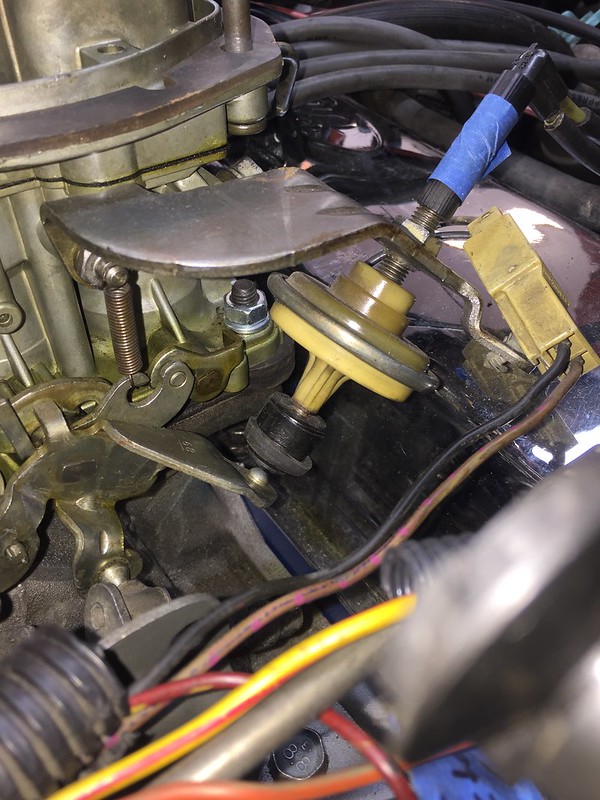Hello everyone. I've been searching the web extensively the last few weeks trying to get a carb worked out on a 1983 Ranger with a 2.3. The throttle shaft on the original Carter YFA has a lot of play in it and the MCU system wasnít working anyway, so I put on a 5200 from a 1974 Pinto. It drives ok for the most part but Iím having a few concerning issues.
I went through the lean beat idle procedure several times and where it says the engine should run slow like a tractor at first mine is running at about 1100 rpm. I can get the idle to stabilize around the 850 specified on the sticker by playing around, but the AFR is 12.5. The idle mixture screw is 1.25 turns ouh. I keep thinking there has to be a vacuum leak somewhere but canít find any. I get a short stumble if I shoot the throttle shafts directly with carb cleaner. Is it possible this is the entire issue? I canít feel any play in the shafts when I pull on them.
There is also a deep lean spot just barely off idle. At very light cruise the truck stumbles and lurches and AFR goes to 19 at times. Would this be the transition holes? I donít know how to adjust that without screwing up idle. How can I get rid of this lean spot?
The jets in the carb are are as follows:
Primary main 132
Secondary main 140
Primary air corrector 170
Secondary air corrector 185
Primary idle jet 70
Secondary idle jet 50
Primary e tube 05
Secondary e tube 16
This forum seemed to have a lot of 5200 info on it so I figured it might be worth a shot asking here. Thank you to anyone who can offer any assistance or guidance.
Sorry about the goofy text sizes. Iím trying to post this with a cell phone and apparently Iíve met my match.





 Reply With Quote
Reply With Quote




Connect With Us